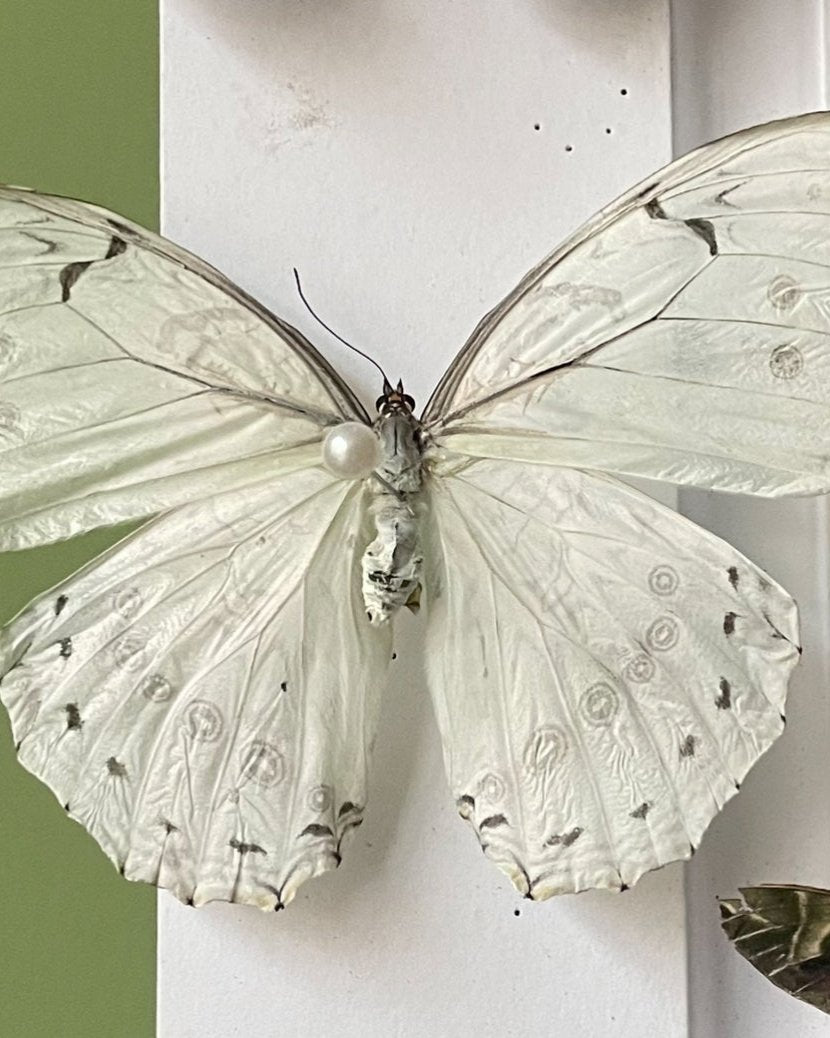Bugs & Butterflies UK
White Morpho PUPAE (Morpho polyphemus)
White Morpho PUPAE (Morpho polyphemus)
Couldn't load pickup availability
The White Morpho (polyphemus) is a striking butterfly in the same family as the Blue Morpho (helenor), native to Central and South America. This species is typically referred to as the White Morpho due to its predominantly white wings, which distinguish it from the more commonly known blue morphos, although it can have a silver tint. Unlike its blue relatives, White Morpho wings are primarily white with pale brown or grey markings. The forewings feature subtle patterning, and the hindwings are typically white with eye spots and faint lines. The eyespots are often dark in color, providing a contrast against the pale wing background.
The White Morpho is found in the rainforests and tropical woodlands of Central and South America, including areas of: Mexico; Costa Rica; Panama; Colombia; Ecuador; and Brazil. These butterflies typically inhabit the forest understory and edges, near streams or rivers, where their host plants grow - specific climbing plants in the Legume family. The presence of large trees, which provide ample resting spots and shelter, is also important for their habitat.
Morpho polyphemus is diurnal, flying in the forest understory and along clearings. While the males are often seen gliding through their territories in search of females, the females tend to remain closer to the ground, feeding on sap from trees and juices from over-ripe fruits. The larvae of the White Morpho feed on plants from the Fabaceae (legume) family, including species of Inga. The caterpillars are typically green or brown, with some spiny or camouflaged features to deter predators. Pupation occurs in a bright green chrysalis, which is often hidden within the leaves or branches. The moths remain in this pupal stage until they emerge as adults after about 3 or 4 weeks. Adult butterflies can be fairly long-lived - we have observed them living for around two months in the butterfly house.
Difficulty - Easy to hatch and care for (1/10)
Host plants - Callaindria; Inga; largely unknown
Conditions - Room temperature is sufficient but appreciates warmth and sunshine.
Lifecycle - Continually brooded; adults live for several weeks.
Share





